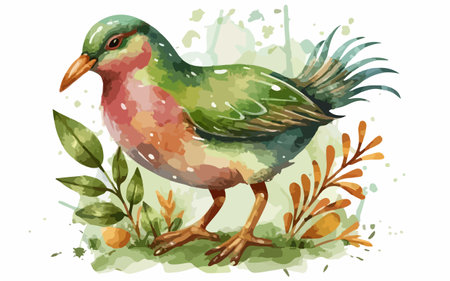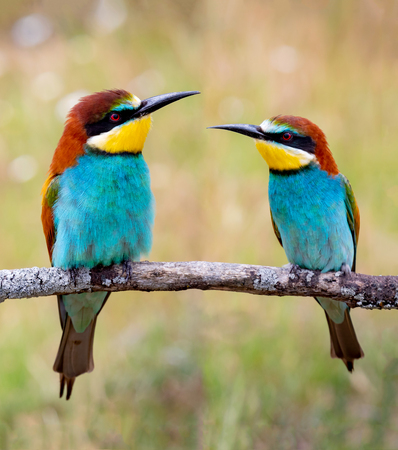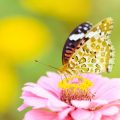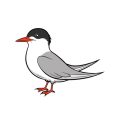Understanding British Garden Birds
The charm of a British garden often comes alive with the presence of vibrant and melodious birds. In the UK, gardens are commonly visited by species such as robins, blue tits, blackbirds, sparrows, and goldfinches. Each bird brings its own character—robins are known for their friendly nature and boldness, especially in winter, while blue tits display acrobatics as they search for food. Blackbirds serenade gardens at dawn and dusk, and sparrows flit energetically in groups. Goldfinches, with their flashes of red and gold, add a splash of colour.
British garden birds exhibit behaviours that change with the seasons. In spring, you’ll notice increased activity as birds build nests and seek partners. Summer sees parents busily feeding chicks, while autumn brings more foraging as birds prepare for colder months. Winter transforms garden visitors: food becomes scarce, so many birds flock to feeders and seek shelter in thick hedges or nesting boxes.
Understanding these seasonal patterns is key to attracting and supporting local wildlife. By recognising which birds frequent your garden and when, you can tailor your approach—offering suitable food, water, and nesting options that reflect both the natural cycles and unique preferences of British bird species.
Essential Garden Habitats
Creating a welcoming environment for British garden birds begins with thoughtful habitat planning. A well-designed garden offers food, shelter, and safe nesting spaces, attracting a diverse range of bird species throughout the year. Below are key elements to consider when setting up an inviting haven for your feathered visitors.
Garden Layout: Space and Structure
A varied garden structure encourages different types of birds to visit. Incorporate layers by mixing lawns, flower beds, shrubs, hedges, and trees. Leave some wild corners or undisturbed areas as these provide vital refuge and foraging grounds for shy species. Climbing plants on fences or trellises also offer extra cover.
Planting Choices: Native Species Matter
Selecting the right plants is crucial. Native British plants supply natural food sources like berries, seeds, and insects while supporting local ecosystems. Here’s a simple guide to beneficial plant options:
| Plant Type | Examples | Benefits for Birds |
|---|---|---|
| Trees | Rowan, Hawthorn, Silver Birch | Berries, nesting sites, insects |
| Shrubs | Dog Rose, Blackthorn, Holly | Cover, berries for winter food |
| Flowers & Herbs | Sunflower, Cornflower, Lavender | Seeds, nectar for pollinators attracting insect-eating birds |
Natural Shelter: Safe Havens Year-Round
Birds need protection from predators and harsh weather. Dense hedges, mature trees, and thick shrubbery provide excellent shelter. Avoid excessive tidying—leave leaf piles and log stacks in quiet spots as they become natural refuges and attract insects for birds to feed on.
A thoughtfully arranged garden with a mix of native plants and natural hideaways not only enhances your outdoor space but also ensures visiting birds feel safe and supported throughout the seasons.

3. Choosing the Right Feeders
Selecting suitable bird feeders is essential for attracting a variety of British garden birds. Understanding which types of feeders work best and where to place them can make your garden a welcoming haven for local species.
Popular Bird Feeder Types in the UK
Seed Feeders
Seed feeders are ideal for small birds like blue tits, finches, and sparrows. These feeders usually have multiple ports, allowing several birds to feed at once. Fill them with sunflower hearts or mixed seeds for broad appeal.
Peanut Feeders
Made from sturdy mesh, peanut feeders are perfect for attracting great tits, woodpeckers, and nuthatches. Only use whole peanuts that are safe for wildlife, especially during nesting season when crushed nuts prevent choking hazards for chicks.
Fat Ball and Suet Feeders
Fat balls and suet blocks provide energy-rich food for robins, starlings, and long-tailed tits. Place these feeders in sheltered spots to prevent rain from spoiling the food and ensure easy access for birds.
Ground Feeders
Some birds, such as blackbirds and dunnocks, prefer feeding at ground level. Ground trays or low platforms work well with mealworms, fruit, or seed mixes designed for ground-feeding species.
Suitable Foods for Different Species
- Sunflower seeds: Loved by finches and tits
- Nyjer seeds: Attract goldfinches and siskins
- Peeled peanuts: Favourites of woodpeckers and jays
- Dried mealworms: Enjoyed by robins and wrens
Feeder Placement Tips
- Place feeders near shrubs or trees to give birds natural cover from predators.
- Avoid placing feeders too close together to reduce competition and stress among birds.
- Keep feeders out of direct sunlight to prevent spoilage of food.
- If possible, position feeders within view from your window so you can enjoy watching visiting wildlife.
By choosing the right feeder types, providing suitable foods, and placing them thoughtfully around your garden, you’ll encourage a diverse range of British birds to visit throughout the year.
4. Effective Use of Bird Food
Selecting the Right Feed for British Birds
Choosing the appropriate bird food is essential to attract a variety of British garden birds. Different species have unique preferences, so providing a diverse selection will increase your chances of welcoming more visitors. Here’s a table to help you match common UK garden birds with their preferred foods:
| Bird Species | Preferred Feed |
|---|---|
| Blue Tit | Sunflower seeds, peanuts, suet, mealworms |
| Robin | Mealworms, suet, fruit, soft seed mixes |
| Goldfinch | Niger seeds, sunflower hearts |
| House Sparrow | Mixed seeds, sunflower hearts, suet pellets |
| Blackbird | Sultanas, mealworms, apples, raisins |
Understanding Dietary Needs Throughout the Year
The dietary needs of birds change with the seasons in Britain. During winter, high-energy foods like suet and fat balls provide essential calories. In spring and summer, protein-rich feeds such as mealworms support breeding and rearing young. Always check that the feeds you choose are suitable for the season to keep your feathered friends healthy.
Seasonal Feeding Guide
| Season | Recommended Feeds | Purpose |
|---|---|---|
| Winter | Suet, fat balls, peanuts, sunflower hearts | Energy for warmth and survival |
| Spring/Summer | Mealworms, soaked sultanas, fruit pieces, soft seed mixes | Protein for nesting and raising chicks |
| Autumn | Berries, seeds, mixed grains | Fat reserves for migration or colder weather preparation |
Feeder Hygiene: Keeping Birds Safe and Healthy
Caring for the health and safety of garden birds means keeping feeders clean. Dirty feeders can spread diseases like trichomonosis and salmonella. Clean all feeders weekly with hot soapy water or a mild disinfectant safe for wildlife. Rinse thoroughly and let them dry before refilling. Regularly remove uneaten or mouldy food and always wash your hands after handling feeders.
This careful approach ensures your British garden remains a welcoming and safe haven for a diverse array of wild birds.
5. Nesting Boxes: Selection and Positioning
Choosing the Right Nesting Box for British Birds
Selecting an appropriate nesting box is key to attracting native UK garden birds. For blue tits and great tits, opt for small-holed boxes (25–28mm entrance). Robins and wrens prefer open-fronted boxes positioned discreetly among vegetation. House sparrows and starlings need larger-holed boxes (32mm or more), while swifts require special swift boxes with a narrow entrance slit. Always use untreated wood to ensure safety for wildlife, and avoid metal or plastic as these can cause overheating.
Optimal Placement for Success
Positioning your nesting box correctly boosts its chances of being used. Place boxes two to four metres above ground, away from direct sunlight and prevailing winds—an east or north-east facing wall or tree is ideal. Keep boxes out of reach from predators such as cats and squirrels by avoiding fences and making sure there are no easy jump-off points nearby. For open-fronted boxes, extra cover from shrubs or climbers is essential to provide shelter and privacy.
Spacing and Multiple Boxes
If you wish to put up several boxes, space them well apart. Birds can be territorial, so place tit boxes at least three metres apart. Sparrow terraces, however, can be grouped together as these birds are communal nesters.
Year-Round Maintenance Tips
Regular maintenance keeps nesting boxes safe and inviting. Clean out old nests in autumn once breeding has finished—use boiling water to remove parasites, but avoid chemicals. Inspect for damage each winter and replace or repair where necessary. Remove any debris blocking the entrance hole before spring arrives so birds can move in promptly when the season begins.
Encouraging Long-Term Habitation
By carefully selecting, placing, and maintaining nesting boxes, you provide a secure haven for British garden birds year after year—helping local wildlife thrive while enjoying their presence in your garden.
6. Encouraging Birds Year Round
Supporting British garden birds throughout the year ensures a vibrant and healthy wildlife haven in every season. Each time of year presents unique challenges and opportunities for our feathered friends, so it’s important to adapt your approach as the months change.
Spring: Nesting Support
As days grow longer and birds begin nesting, offer a variety of nesting boxes suited to local species like robins, blue tits, or wrens. Place them in sheltered spots, away from direct sunlight and predators. Provide materials such as pet hair or natural fibres nearby. Switch to high-protein foods, like mealworms, to help adults feed their chicks.
Summer: Hydration and Shade
During warmer months, fresh water is vital. Keep bird baths topped up and place them in shaded areas to prevent overheating. Clean feeders regularly to stop bacteria from spreading in the heat. Offer energy-rich seeds but reduce suet-based foods that can spoil quickly in hot weather. Let parts of your garden grow wild to give birds shelter and natural food sources.
Autumn: Preparing for Cold Weather
As berries ripen and insects decline, start introducing higher-fat foods such as suet balls, peanuts (unsalted), and sunflower seeds. Replenish feeders more frequently as birds build fat reserves for winter. Clean out old nesting boxes to prepare them for possible winter roosting or next year’s nests.
Winter: Essential Feeding
The coldest months are often the hardest for garden birds. Keep feeders filled with calorie-dense options—sunflower hearts, suet cakes, and mealworms—to help birds survive frosty nights. Break ice on water sources each morning so birds can drink and bathe. Position feeders near hedges or shrubs to offer protection from harsh winds and predators.
All-Year Garden Care
No matter the season, maintaining a clean environment is key. Wash feeders and water dishes regularly, remove uneaten food, and ensure nesting boxes are free from parasites. A thoughtfully managed British garden provides a safe retreat for birds all year round.


